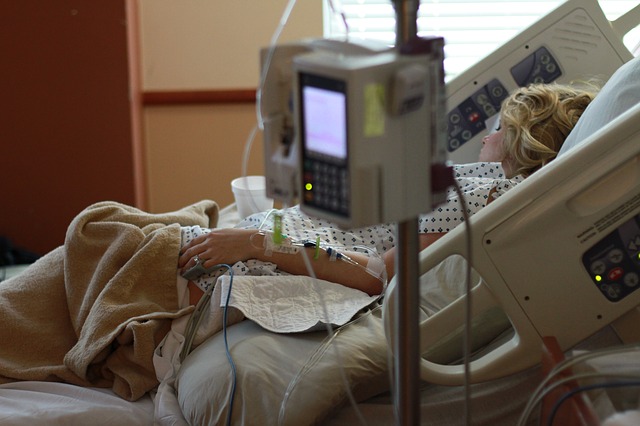Lessons from ‘The United States of Opioids’
/By Roger Chriss, PNN Columnist
Harry Nelson’s new book “The United States of Opioids: A Prescription for Liberating a Nation in Pain” looks closely and productively at the opioid overdose crisis. It comments on origins and causal factors, and offers pragmatic policy ideas for addressing it. The book is succinct and well-organized, designed for easy reading and reference.
Nelson starts with a dire description of addiction and overdose, calling the U.S. opioid crisis “American healthcare’s self-inflicted wound.” He then gives a brief history of opioids, explaining the three waves of the crisis, culminating in illicit fentanyl and “an increasing crackdown on physician overprescribing.”
Nelson touches on the history and science of opioids, then looks at causes of the crisis. These include not only Purdue Pharma and the Sacklers, but also drug distributors, retailers and health insurers. Institutional and regulatory failures on opioids are not ignored.
“The overarching problem when it comes to physician overprescribing has been insufficient training and education on how to prescribe opioids,” he writes. “The FDA approved these drugs and oversaw the data concerning the risks of their misuse, abuse, addiction, and overdose.”
But Nelson digs deeper, looking at the underlying social and cultural determinants that play into the longer term. He cites a 2018 University of Pittsburgh study that underscores that opioids are part of a broader trend in which abuse of multiple drugs and a rising drug overdose rate “that shows no signs of slowing, with sub-epidemics of different drugs over time.”
Unlike other books, Nelson writes in depth about how to address the crisis: “I believe that our attention should first be focused on a host of intersecting trends that point to suffering in America — parallel crises that include suicidality, anxiety, depression, and pain.”
He explores other options for pain management, from NSAIDs and nerve blocks to non-pharmacological techniques: “It is critical to push insurers and government programs to cover non-opioid treatment, even if it means spending more to achieve this priority.”
Nelson includes a whole chapter on cannabis and other alternative therapies for opioid addiction, in particular kratom and psychedelics. He is optimistic but tentative about cannabis: “Despite the potential to address health issues, consumers need to be cautious about both the claims and contents of cannabis products.”
He also looks at addiction treatment, including AA-type abstinence programs and medication-assisted therapy, and notes that “the biggest challenge in addiction treatment is the complexity of addiction itself.”
Nelson is highly critical of much of the response to the crisis to date: “When I think about the government and health system’s approach for taking on the opioid crisis, the thing that strikes me most is how much it feels tactical rather than strategic.”
Nelson condemns the rampant fraud and patient brokering in the recovery industry. But he also points out that addiction treatment itself needs improvement.
“We will know that addiction treatment has ‘arrived’ in terms of its integration into healthcare when we have relatively uniform professional and program licensure requirements from state to state — something seemingly decades away,” he wrote.
Nelson lists seven general recommendations for the crisis in his OPIOIDS acronym:
Outreach for prevention and early intervention
Physician improvements
Innovation in pain and addiction care
Overdose interventions
Interdiction off illicit opioids
Data analytics to better track the crisis
Strengthening access to addiction care
He emphasizes the value of harm reduction, improving social capital, and organizing prevention in schools and the workplace — instead of “stop gap” measures that do little beyond preventing fatal overdoses.
“The key to solving the opioid crisis lies in not being satisfied with tackling the overdose death issue, but in addressing two of the fundamental problems that got us here: the inadequate management of ongoing issues for people living with chronic pain, which overlaps with the second problem of people living with an opioid use disorder (OUD),” he writes.
Finally, Nelson gives a warning: “If we think about the opioid crisis as the ‘canary in the coal mine,’ it’s warning us that we need to address a much bigger, toxic set of problems.”
For all the book offers, it also has problems. Nelson overstates the number of people with opioid use disorder, misrepresents the complex nature of opioid initiation, and misconstrues the varied trajectory of heroin addiction. Most importantly, Nelson gives little attention to rising rates of cocaine and methamphetamine overdose deaths, and ignores that most overdoses involve multiple drugs.
“The United States of Opioids” offers a suite of tools and ideas for moving forward, a refreshing change from the many righteous rants or poignant laments about the crisis.
Roger Chriss lives with Ehlers Danlos syndrome and is a proud member of the Ehlers-Danlos Society. Roger is a technical consultant in Washington state, where he specializes in mathematics and research.
The information in this column should not be considered as professional medical advice, diagnosis or treatment. It is for informational purposes only and represents the author’s opinions alone. It does not inherently express or reflect the views, opinions and/or positions of Pain News Network.




























